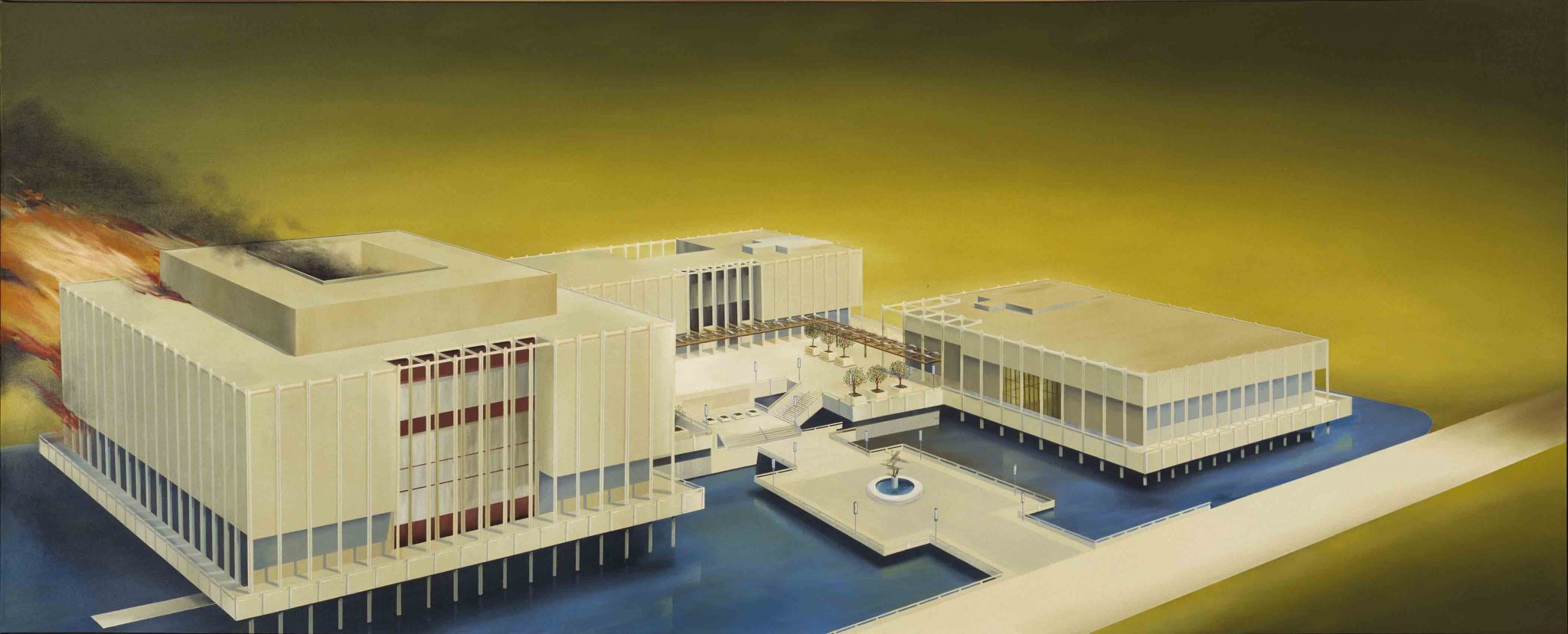Might it be a coincidence or is it the result of the marketing frenzy currently revolving around the centenary of the First World War that several exhibitions on art and destruction have recently taken place? First there was Art Under Attack (2013) at Tate Britain, a survey of iconoclasm in Britain from the sixteenth century until the present day. Then there was Ravage (2014) in Belgium’s M-Museum Leuven, which did not show destroyed artworks but depicted the process of destruction in times of conflict, both past and present. And now MUDAM in Luxembourg presents Damage Control: Art and Destruction Since 1950, an exhibition that was first on view in the Hirshhorn Museum in Washington and will afterwards travel to Kunsthaus Graz. Though the three shows are related, the scope of Damage Control is larger than the aforementioned ones, while at the same time encompassing elements of both.
It is not without reason that the exhibition, which features some 90 works by over 40 artists, commences in the period after the Second World War, when the rise of Cold War paranoia around the nuclear threat reached its peak, as addressed in the first and strongest section of the show. The opening works, by Harold ‘Doc’ Edgerton (commissioned by the US Atomic Energy Commission), set the tone: a series of images of atomic explosions from the 1950s depict impressive cloud formations and hues. In its mesmerising beauty, this body of work perfectly captures the aestheticisation of destruction. It is within this sociopolitical context of the postwar climate that Jean Tinguely’s selfdestructive machines are presented, next to Harold Liversidge’s video Auto-Destructive Art – the Activities of G. Metzger (1963), in which Gustav Metzger, known for his ‘Auto-Destructive Art Manifesto’ (1959), is shown wearing a gas mask while spray-gunning canvases with acid until they are almost completely eaten away.
This appetite for destruction later also inspired others. Some destroyed existing works by other artists (like Ai Weiwei smashing a precious Chinese vase to smithereens, in Dropping a Han Dynasty Urn, 1995; or the Chapman Brothers ‘improving’ a set of original Goya Disasters of War etchings, 1810–20, for Injury to Insult to Injury, 2004, by adding new elements – the latter work being also included in Art Under Attack). Others applied the process of destruction as a principle in their own practice. John Baldessari, for example, bade farewell to his previous production by burning all his paintings from 1953 to 1966 in his Cremation Project (1970), while Michael Landy went a step further for Break Down (2001) by not only annihilating his entire archive, but also all his personal belongings, including passport, with a team of operatives that ran as smoothly as an assembly line in a factory, as shown in video documentation.
The artists in the show not only smash, trash and annihilate things, they also portray all kinds of violence, destruction and catastrophe, including train and aeroplane crashes (Juan Muñoz’s Derailment, 2000–1, Larry Johnson’s Black Box, 1987), hurricanes (Monica Bonvicini’s Hurricanes and Other Catastrophes 1, 2008), riots (Roy Arden’s Supernatural, 2005) and war (Luc Delahaye’s Jenin Refugee Camp, 2002). Instead of focusing on one specific aspect, like the two other shows before it, Damage Control aims to present an overview of destruction in all its forms. This is done in a thorough way, including iconic works that cannot be left out in such a context. Because of that, on the other hand, the exhibition sometimes becomes slightly predictable (Landy: check, Baldessari: check, Gordon Matta-Clark: check) and lacks surprises. This, however, is a minor flaw in a show founded on plenty of important works and a fascinating subject.
This article originally appeared in the October 2014 issue
